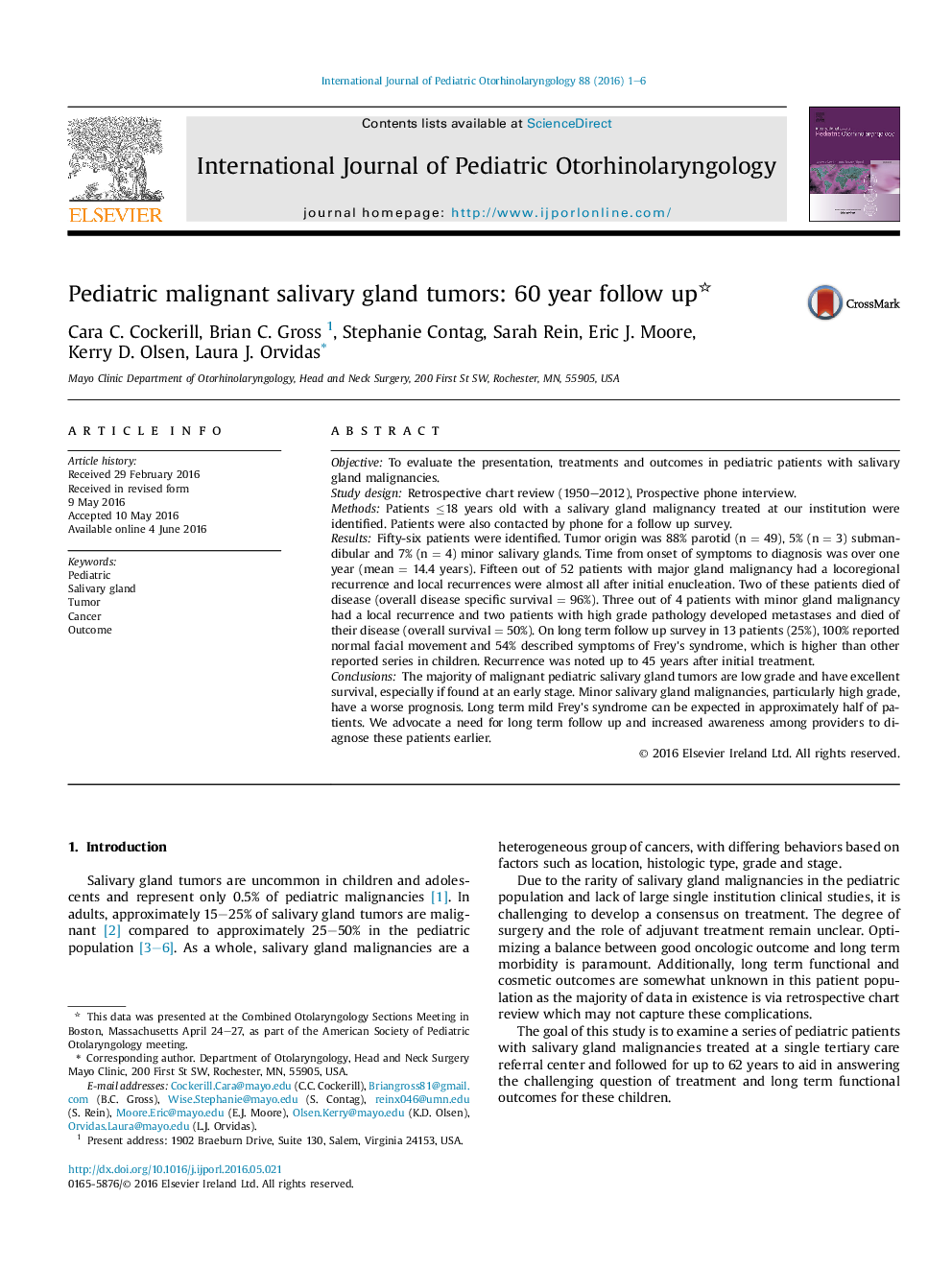| Article ID | Journal | Published Year | Pages | File Type |
|---|---|---|---|---|
| 4111381 | International Journal of Pediatric Otorhinolaryngology | 2016 | 6 Pages |
ObjectiveTo evaluate the presentation, treatments and outcomes in pediatric patients with salivary gland malignancies.Study designRetrospective chart review (1950–2012), Prospective phone interview.MethodsPatients ≤18 years old with a salivary gland malignancy treated at our institution were identified. Patients were also contacted by phone for a follow up survey.ResultsFifty-six patients were identified. Tumor origin was 88% parotid (n = 49), 5% (n = 3) submandibular and 7% (n = 4) minor salivary glands. Time from onset of symptoms to diagnosis was over one year (mean = 14.4 years). Fifteen out of 52 patients with major gland malignancy had a locoregional recurrence and local recurrences were almost all after initial enucleation. Two of these patients died of disease (overall disease specific survival = 96%). Three out of 4 patients with minor gland malignancy had a local recurrence and two patients with high grade pathology developed metastases and died of their disease (overall survival = 50%). On long term follow up survey in 13 patients (25%), 100% reported normal facial movement and 54% described symptoms of Frey's syndrome, which is higher than other reported series in children. Recurrence was noted up to 45 years after initial treatment.ConclusionsThe majority of malignant pediatric salivary gland tumors are low grade and have excellent survival, especially if found at an early stage. Minor salivary gland malignancies, particularly high grade, have a worse prognosis. Long term mild Frey's syndrome can be expected in approximately half of patients. We advocate a need for long term follow up and increased awareness among providers to diagnose these patients earlier.
